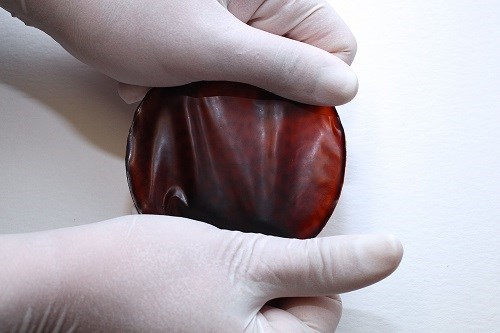Italian Tech Institute Develops Bioplastics From Agro-Waste
Researchers at the Instituto Italiano di Tecnologia have made bioplastics from edible food waste.
Researchers at the Smart Materials, Nanophysics department of the Instituto Italiano di Tecnologia have succeeded in producing bioplastics through the direct transformation of edible vegetable waste. Coordinated by tenured scientist Athanassia Athanassiou, the team used industrially processed edible vegetable and cereal waste. Model bioplastic systems were synthesized from wastes of parsley and spinach stems, rice hulls, and cocoa pod husks by digesting in trifluoroacetic acide (TFA), casting, and evaporation.
According to researcher Ilker Bayer, many other elements present in these plants are carried over into the bioplastics rendering them with many exceptional thermo-physical properties. In a recent article that appeared in the American Chemical Society’ Macromolecules publication, the team showed that due to their broad compatibility with cellulose, amorphous cellulose can be naturally plasticized with these bioplastics by simply mixing during processing.
Comparison of the mechanical properties of films made with these waste bioplastics with various petroleum based synthetic polymers, including PP, PE, PET, TPU, as well as starch-polymer blends, and biopolyesters such as polycarpolactoness and polylactic acids (PLA), show these unusual bioplastics to fill the performance gap between synthetic plastics and conventional biopolymers. For example, amorphous pure cellulose films display high ultimate tensile strength (UTS) at high Young’s modulus comparable to PET, whereas parsley, spinach and rice bioplastic films cluster close to elastomers and LDPE thermoplastic.
Bioplastics from cocoa pod husk can be compared with HDPE and PP. It is also possible to produce bioplastics designed to close the gap between PET and PP, the researchers say. For instance, a blend of microcrystalline cellulose with spinach (10 wt%) would yield a property that directly falls in the middle of this gap. This proves that a wide range of mechanical properties can be designed by simply blending these vegetable waste bioplastics that many times cannot be achieved by solution or thermoform blending of conventional polymers due to incompatibility issues.
Want to find or compare materials data for different resins, grades, or suppliers? Check out Plastic Technology’s Plaspec Global materials database.

Related Content
-
Best Methods of Molding Undercuts
Producing plastics parts with undercuts presents distinct challenges for molders.
-
How to Extrusion Blow Mold PHA/PLA Blends
You need to pay attention to the inherent characteristics of biopolymers PHA/PLA materials when setting process parameters to realize better and more consistent outcomes.
-
US Merchants Makes its Mark in Injection Molding
In less than a decade in injection molding, US Merchants has acquired hundreds of machines spread across facilities in California, Texas, Virginia and Arizona, with even more growth coming.















